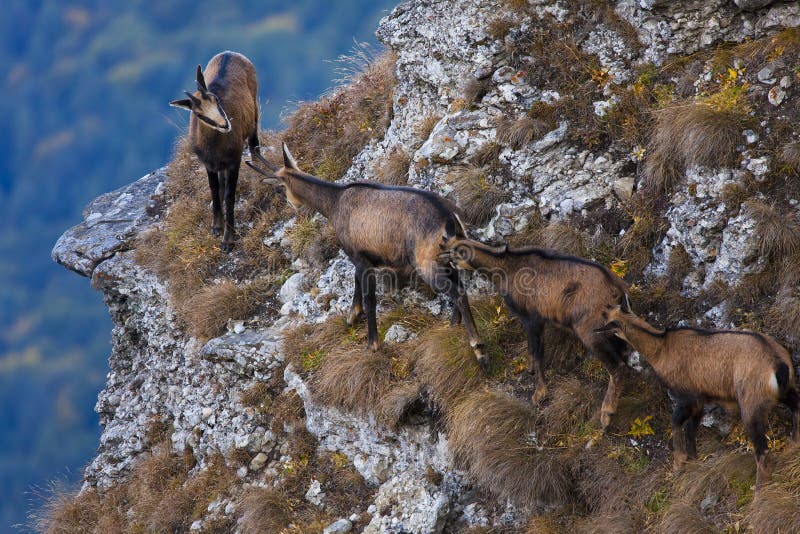Are Chamois Goats?

Introduction
When exploring diverse wildlife, the chamois often piques curiosity. But are chamois goats? This question leads us into the fascinating world of animal classification, habitats, and behavior. Chamois, known for their agility and grace, are commonly associated with mountainous regions of Europe and Asia. In this article, we will clarify the relationship between chamois and goats, delve into their characteristics, habitats, and behaviors, and uncover what sets them apart from other members of the goat family.
What Are Chamois?
Overview of the Chamois
Chamois (Rupicapra rupicapra) is a species of goat-antelope found primarily in the mountainous regions of Europe, particularly in the Alps and the Carpathians. They are well-adapted to steep, rocky terrains and are known for their remarkable climbing abilities.
-
Physical Characteristics: Chamois have a distinct appearance, characterized by their short, stocky legs, a slender body, and a small, pointed head. Their fur is typically a mix of brown and black, with a lighter underbelly.
-
Size: Adult chamois usually weigh between 30 to 50 kilograms (66 to 110 pounds) and stand about 70 to 90 centimeters (27 to 35 inches) tall at the shoulder.
Are Chamois Goats?
Now, to answer the burning question: Are chamois goats? While chamois share some similarities with goats, they are classified as a separate species within the Bovidae family. Here are some key distinctions:
-
Taxonomy: Chamois belong to the genus Rupicapra, while true goats are classified under the genus Capra. This taxonomic distinction highlights their differences despite some physical resemblances.
-
Behavior and Habitat: Chamois are more elusive and adapted to rugged mountain environments, whereas goats can thrive in a variety of habitats, including grasslands and forests.
The Chamois' Unique Adaptations
Chamois have evolved several unique adaptations that set them apart from goats:
-
Climbing Ability: Their specialized hooves with a concave shape allow them to navigate steep and rocky surfaces with ease. This agility is crucial for escaping predators.
-
Social Structure: Chamois typically live in small herds, which can include both males and females. During the breeding season, males become more solitary to compete for mates.
Habitat and Distribution of Chamois
Geographic Range
Chamois are predominantly found in the mountainous regions of Europe, particularly in:
-
The Alps: Home to a significant population of chamois, these mountains provide ample rocky terrain for their lifestyle.
-
The Carpathians: Another crucial habitat, the Carpathians offer similar environmental conditions that favor the chamois.
-
Other Regions: Smaller populations can be found in parts of the Caucasus and the Pyrenees.
Habitat Preferences
Chamois prefer steep, rocky terrains with sparse vegetation. This preference allows them to evade predators and find food sources, primarily consisting of grasses, herbs, and shrubs. Their ability to thrive in harsh environments underscores their adaptability.
Behavior and Social Structure
Daily Activities
Chamois are crepuscular, meaning they are most active during dawn and dusk. During the day, they often rest in shaded areas to conserve energy. Their foraging habits include:
-
Grazing: Chamois primarily feed on grasses and leaves, using their keen eyesight to locate food.
-
Climbing: They are adept climbers, often ascending to higher altitudes to find food and avoid predators.
Social Behavior
Chamois are social animals, typically forming herds. The social structure can include:
-
Female Groups: Females, along with their young, usually form stable groups that provide protection and support.
-
Male Dominance: Males often become solitary or form small bachelor groups outside of the breeding season, engaging in competitive behaviors to establish dominance.
Conservation Status
Chamois populations have fluctuated due to factors such as habitat loss, hunting, and climate change. However, conservation efforts have been implemented in various regions to protect their habitats and ensure their survival.
Current Threats
-
Habitat Loss: Urbanization and agricultural expansion have reduced their natural habitats.
-
Hunting: Although regulated, hunting remains a concern for chamois populations in some areas.
Conservation Efforts
Organizations and governments are working together to establish protected areas and enforce hunting regulations. Public awareness campaigns are also crucial for promoting conservation efforts.
Conclusion
In summary, chamois are fascinating creatures that possess unique adaptations suited for life in mountainous environments. While they share some characteristics with goats, they are not classified as such. Understanding their behavior, habitat, and conservation challenges is crucial for promoting their survival. As we continue to study and appreciate these remarkable animals, it's essential to support conservation efforts that protect their natural habitats and ensure that future generations can enjoy the sight of chamois in the wild.



Comments ()